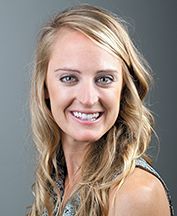You became a chiropractor to serve people, not an insurance company. You deserve to run a business that aligns with your values, supports your family and lights you up. Cash-based care isn’t just a pricing model – it’s a philosophy rooted in freedom, trust and respect for your patients and for yourself. Here's why - and how - to do it.
Collaboration for a Cause
The Patient Protection and Affordable Care Act strongly encourages the formation of multidisciplinary practitioner teams called Patient Centered Medical Homes (PCMHs) and Accountable Care Organizations (ACOs). I work as a chiropractic physician at a recently formed PCMH in Gaithersburg, Md. – the Casey Health Institute (CHI), a nonprofit, community-based, primary-care outpatient clinic.
I was attracted to working at CHI because, unlike PCMHs composed solely of conventional biomedical practitioners, the primary-care medical physicians who founded CHI in 2013 also sought out practitioners of chiropractic, psychology, acupuncture, naturopathy, massage therapy, yoga, meditation, and Reiki to achieve their vision of truly integrative health care. The CHI model aligns perfectly with my own ideals, and I am pleased that my experience working at CHI has lived up to my hopes.
At CHI, we are working together to create a model of integrative health care that transforms the patient-provider relationship by focusing on prevention and treating the whole person. In addition, CHI is creating a sustainable organization that can provide health care for the underserved. We aim to serve the health of each individual patient while also serving the health of our community.

Aside from the practitioner-based individual care, CHI also includes a wellness center that offers community-based meditation, yoga, fitness and cooking classes to promote a healthy lifestyle.
Collaboration Based on Expertise, Mutual Respect
Every practitioner hired to work at CHI must demonstrate expertise in their field, experience in integrative care settings and respect for all the disciplines represented at CHI – including medicine, nursing, psychology, naturopathy, chiropractic, acupuncture and massage therapy. Because I had a chiropractic fellowship at the Walter Reed National Military Medical Center during my senior year in chiropractic school, working alongside other types of practitioners is familiar territory. Prior to working at CHI, however, I had never referred a patient for yoga therapy or Reiki. Approaching unfamiliar areas with an open mind is a critical prerequisite for working in an integrative PCMH like Casey Health Institute.
Integrated Communication, Information Sharing
At the center of the clinic is a room with computers and desks where physicians "live" between patients. This is the place where integration of the multiple disciplines comes to life. It creates a formal space for "hallway" consults where everyone from chiropractic to acupuncture to family medical doctor participates in the discussions. It is a place where the patient is truly at the center and finding the best option(s) for their condition is everyone's goal. In addition, our electronic health records system allows us to share patient information among all practitioners involved in a case.
Case Studies in Collaboration
Describing our PCMH in general terms may not provide a textured sense of how we work together across disciplinary lines. Here are a few cases in which I've collaborated with other members of the CHI team:
Chronic low back pain: A 49-year-old woman presented to her PCP for a 15-year history of chronic low back pain. Her PCP told her about chiropractic and asked if she would like to meet me to learn more. I was able to do a quick consult where I explained chiropractic care and what to expect at her appointments. She was very interested and scheduled to see me.
The anxiety and fear associated with her low back pain became apparent as we worked together, so I strongly suggested she also start attending the free meditation and yoga at Casey Health Institute. This is a popular weekly event conducted by CHI's yoga therapist and psychologist; it is open to the community. After four weeks, she was dismissed from care pain-free and continues to be a regular at yoga and meditation.
Polymyalgia rheumatica: A 70-year-old man with polymyalgia rheumatica suffering from chronic fatigue, muscle aches and joint pain for more than 20 years presented to the primary care office first for an integrative approach for his condition. Initially, he was directed to the naturopathic doctor and acupuncturist. He felt great improvement in his energy levels and pain, but his shoulders and sacroiliac joints remained a problem. The acupuncturist suggested chiropractic care as an option and the patient was interested.

Prior to his chiropractic visit, I consulted with the acupuncturist about the information he had gathered and goals of his treatments. After a few visits of the combination of acupuncture and chiropractic care, the patient stated there had been a breakthrough with his pain and energy, which remained at a significantly improved level until several weeks later, when he had a flareup from a food allergy. He is still coming in for maintenance acupuncture and is in the rehabilitation phase of care for his chiropractic treatment. Energy and generalized pain have vastly improved – he is able to do more of what he loves because of it.
Depression and musculoskeletal pain: A middle-aged Hispanic woman presented to primary care with depression, anxiety and musculoskeletal pain. She was referred to both psychology and chiropractic care by her PCP. The psychologist and I consulted as we co-managed, and it was rewarding to watch this patient's positive transformation in just a few weeks. After only a couple of treatments / sessions, her depression was almost completely gone and her low back and neck pain had vastly improved. The positive effect was undoubtedly a combination of the mindfulness meditation and deep-breathing exercises from the psychologist in conjunction with my joint manipulation, soft-tissue mobilization, and core strengthening and rehab.
Integrative Collaboration: How DCs Can Get Involved
The decision to approve my application to work on the team at Casey Health Institute was based on my previous work in integrative settings at Walter Reed National Military Medical Center and Mahalaype District Hospital in Botswana; my commitment to evidence-based care; my familiarity with research and with trends in integrative medicine; and my training in areas beyond the basics of the core curriculum at chiropractic college. In advising doctors who want to consider working at a PCMH, I would suggest they focus on the following:
- A strong evidence-based foundation – Be able to explain the natural history of musculoskeletal conditions and the therapeutic options to patients and other health care providers. Stay current and follow the trends in peer-reviewed literature.
- Multidisciplinary experience – Previous experience in multidisciplinary practice provides a strong basis in integrative, collaborative approaches. Chiropractic colleges are increasing the number of options for these integrative opportunities through various internships and preceptorships.
- Exposure to integrative health care models and care pathways – Knowledge of how integrative clinics are organized and how the care is delivered is crucial. Be familiar with the different types of models of care, and their strengths and weaknesses. Understand the use of clinical care pathways within integrative health care models as a quality assessment tool for the delivery of care. These pathways promote the use of best practices and help to standardize care for particular conditions to decrease the amount of variability.
- Enthusiasm, eagerness and willingness to learn – Integrative health care is new and always changing; therefore, you must be open to modify practices and be willing to learn new systems. Value and refine your clinical skills through continuing education. Build relationships with other practitioners with an attitude of openness and holism. Recognize the complex network of pathways in which the human body heals and how various therapies can access these pathways differently per individual situation.1
Reference
- Redwood D. "Walking Our Talk: Putting the Integrity Into Integration." Topics Integ Health Care, 2010;1(1).
The author would like to acknowledge Dr. Daniel Redwood, who provided editorial guidance in the writing of this article. Visit Dr. Redwood's website and health-policy blog to learn more.



